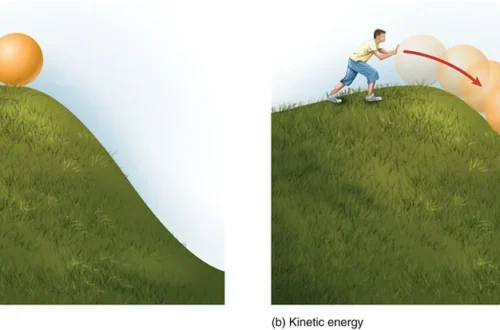sky protection In today’s age of climate change, space exploration, and rising pollution levels, the concept of “sky protection” is becoming increasingly important—but not everyone knows what it really means. When we talk about sky protection, we’re addressing several layers of concerns—from safeguarding our atmosphere and outer space to minimizing human-caused impacts on the skies above us. This article dives deep into what sky protection is all about, why it matters, and how everyone from scientists to average people plays a role.
Understanding Sky Protection: It’s Not Just About Clouds and Blue Skies
At first glance, the term “sky protection” might sound poetic or vague. But in reality, it encompasses a range of serious issues that affect our environment, health, and even technology.
The sky, as we refer to it casually, is more than just the blue canvas we see above us during the day or the star-speckled ceiling at night. It’s a protective barrier made up of atmospheric layers—each playing a critical role in sustaining life. These include the troposphere, stratosphere, mesosphere, thermosphere, and exosphere. Protecting the sky means preserving these layers from harmful pollutants, managing air traffic and satellite debris, and ensuring the ozone layer remains intact.
Beyond atmospheric concerns, sky protection also refers to limiting light pollution, managing aviation-related emissions, and even overseeing the growing problem of space junk. All of these issues, if left unchecked, can have long-term effects on human health, climate stability, and global ecosystems.
What makes sky protection so complex is that it blends environmental science, policy-making, technology, and human behavior. It’s not just an issue for experts—everyone contributes to the sky’s condition in one way or another, whether it’s through car emissions or excessive use of artificial lights at night.

The Role of the Ozone Layer in Sky Protection
Let’s start with one of the Sky Protection most talked-about parts of the atmosphere when it comes to protection: the ozone layer. Located in the lower part of the stratosphere, the ozone layer acts like Earth’s natural sunscreen. It absorbs most of the Sun’s harmful ultraviolet radiation, preventing it from reaching the surface.
The 1980s saw a wake-up call for humanity when scientists discovered a massive hole in the ozone layer above Antarctica. The primary cause? Chlorofluorocarbons (CFCs) used in aerosol sprays, refrigerators, and air conditioners. This discovery led to the landmark Montreal Protocol in 1987, a global agreement to phase out ozone-depleting substances. And here’s the good news—it worked. The ozone layer has been gradually healing, proving that international cooperation on sky protection can have real, measurable results.
However, this doesn’t mean the job is done. There’s still a need for vigilance. New chemicals and industrial practices continue to challenge ozone recovery. Monitoring emissions and enforcing international agreements remains a key part of ongoing sky protection strategies.
In simple terms, protecting the ozone layer is protecting ourselves from a host of health issues like skin cancer, cataracts, and weakened immune systems—not to mention protecting plants and animals that also suffer under increased UV radiation.
Air Pollution: A Major Threat from the Ground Up
When we think about pollution, we usually imagine smog hovering over cities or industrial chimneys pumping out smoke. But what we often forget is that air pollution doesn’t just linger at ground level—it rises and spreads through the atmosphere, causing long-term damage to the sky’s protective functions.
Air pollution from vehicles, factories, and even agriculture releases harmful particles and gases into the atmosphere. These include carbon dioxide (CO₂), methane (CH₄), nitrogen oxides (NOₓ), and fine particulate matter (PM2.5). These pollutants can lead to smog formation, acid rain, and global warming, all of which contribute to sky degradation.
A more invisible but equally dangerous threat is black carbon, often released from burning fossil fuels and biomass. It not only affects air quality but also absorbs sunlight, accelerating atmospheric heating and melting ice in polar regions.
Sky protection, in this context, means reducing the pollutants that rise into the air in the first place. This involves policy changes like enforcing emissions standards, encouraging green transportation, investing in renewable energy, and making cities more sustainable.
The cleaner the air we produce at ground level, the less burden we place on the sky. This trickle-up effect is vital to understanding how small, local changes can have a global atmospheric impact.
Light Pollution: The Hidden Sky Disruptor
Now let’s talk about a lesser-known but increasingly concerning sky issue: light pollution. While it may not seem as harmful as chemical pollutants or greenhouse gases, artificial light—especially in urban areas—has significant effects on both the sky and the life forms beneath it.
Light pollution refers to the excessive or misdirected artificial light that brightens the night sky. This makes it difficult to see stars and disrupts natural patterns of wildlife, such as migration and reproduction. It even affects human circadian rhythms, contributing to sleep disorders and other health issues.
From a sky protection standpoint, reducing light pollution is about preserving the natural night sky. Dark sky initiatives are now gaining momentum around the world. Cities are beginning to implement “dark sky-friendly” lighting, using shielded fixtures, dimming technology, and warmer light tones to minimize skyglow.
Amateur astronomers and skywatchers are among the most vocal advocates for dark sky protection. But it’s not just about aesthetics or stargazing—it’s about restoring a balance between human development and the natural environment.
So, while light pollution may not be as obvious as a smoggy skyline, it’s a subtle, pervasive problem that deserves more attention in any serious conversation about sky protection.
Space Junk: The Sky’s New Frontier of Pollution
We’ve looked at pollution from below, but what about from above? The rise in space exploration, satellite launches, and commercial ventures into orbit has created a new kind of problem: space debris, also known as space junk.
Space junk consists of defunct satellites, broken parts of rockets, and even tiny fragments from past collisions. These objects orbit the Earth at high speeds, posing a risk to both functional satellites and human missions. NASA estimates there are more than 500,000 pieces of debris larger than a marble, and millions more too small to track.
Why does this matter for sky protection? Because these objects don’t stay up there forever—they eventually fall back toward Earth, and their reentry can cause damage. Moreover, they clutter the lower Earth orbit, making future launches more hazardous and complicating space exploration.
Efforts are being made to clean up space—initiatives like ESA’s ClearSpace-1 and Japan’s ADRAS-J mission are pioneering debris-removal technology. But just like on Earth, prevention is better than cure. Sky protection in this realm involves better planning, responsible launches, and sustainable satellite design.
It’s a reminder that our responsibility to protect the sky doesn’t end at the atmosphere—it now extends into space itself.
What Can We Do to Protect the Sky?
Sky protection might sound like a job for scientists, engineers, and policymakers—but in truth, we all play a role. The cumulative effect of individual choices has a significant impact on the sky and its health.
For starters, reducing our carbon footprint is key. This includes using public transportation, conserving electricity, and supporting clean energy sources. Cutting down on single-use plastics and reducing consumption overall also helps minimize pollution, some of which ends up affecting the atmosphere.
We can also support legislation and organizations that prioritize environmental and sky protection. Getting involved in local clean air initiatives, tree-planting drives, and dark-sky preservation groups are ways to make a hands-on difference.
Even seemingly small actions like turning off unnecessary lights at night or properly maintaining your vehicle can contribute to cleaner skies. It’s about awareness and consistency—protecting the sky isn’t a one-time task but an ongoing commitment.
Why Sky Protection Should Be a Global Priority
As our world becomes more interconnected, the sky becomes a shared space in a very literal sense. Pollution from one country doesn’t stay put—it drifts across borders. Satellite collisions in one orbit zone can affect systems worldwide. Climate change, driven by atmospheric imbalances, impacts every continent.
Sky protection, therefore, can’t be tackled in isolation. It requires global cooperation, smart policy-making, and sustainable technological innovation. Treaties like the Paris Agreement, the Montreal Protocol, and emerging space governance frameworks are all steps in the right direction, but they need public support and accountability to be effective.
What’s encouraging is that many of the solutions already exist. We just need the collective will to apply them. Sky protection isn’t about restricting progress—it’s about making sure that progress doesn’t come at the cost of our planet’s health and the beauty of the skies we take for granted.
Conclusion:
The sky has always been a source of inspiration—poets write about it, scientists study it, children gaze at it. But in the rush of modern life, we’ve forgotten that it’s also something that needs protecting.
Sky protection is about more than environmentalism; it’s about ensuring that future generations can enjoy the same clear blue mornings, starlit nights, and clean air that we often overlook today. Whether you’re an activist, a tech developer, or someone just trying to make eco-friendlier choices, there’s a place for you in the mission to protect the sky.
So the next time you look up, think beyond the clouds. Think about what’s really going on up there—and what you can do to keep it safe.





